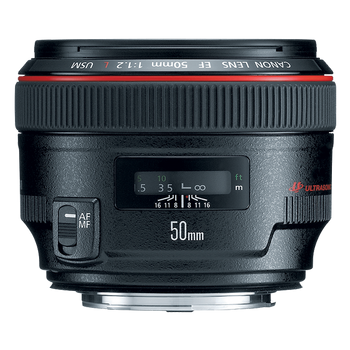When it comes to Canon lenses, photographers have a wide range of options to choose from, each with its own unique characteristics and advantages. In this comparison, we'll be looking at two high-end lenses from Canon: the EF 50mm f/1.2L USM and the RF 100-500mm f/4.5-7.1L IS USM. These two lenses cater to different needs and offer distinct features that set them apart.
Focal Length and Zoom Range
The most obvious difference between these two lenses is their focal length range. The Canon EF 50mm f/1.2L USM is a prime lens with a fixed focal length of 50mm, making it ideal for portrait, street, and documentary photography. On the other hand, the Canon RF 100-500mm f/4.5-7.1L IS USM is a telephoto zoom lens that offers a versatile range of 100-500mm, suitable for wildlife, sports, and landscape photography.
Aperture and Depth of Field
The EF 50mm f/1.2L USM boasts an exceptionally wide aperture of f/1.2, which provides a shallow depth of field and beautiful bokeh (background blur). This makes it perfect for creating intimate, low-light portraits with a creamy background. In contrast, the RF 100-500mm f/4.5-7.1L IS USM has a variable aperture that ranges from f/4.5 to f/7.1, which is still respectable but not as wide as the EF 50mm. The telephoto zoom lens's narrower aperture results in a deeper depth of field, making it better suited for capturing more of the scene in focus.
Image Stabilization
The RF 100-500mm f/4.5-7.1L IS USM features Canon's advanced Image Stabilization (IS) technology, which helps to reduce camera shake and blur caused by hand movement or low light conditions. This is particularly useful for a telephoto lens, as it allows for sharper images at slower shutter speeds. The EF 50mm f/1.2L USM does not have image stabilization, but its wide aperture and relatively short focal length make it less prone to camera shake.
Lens Design and Build Quality
Both lenses are part of Canon's premium L-series lineup, known for their exceptional build quality and durability. The EF 50mm f/1.2L USM features a robust design with a metal lens mount and a weather-sealed construction that can withstand harsh environments. The RF 100-500mm f/4.5-7.1L IS USM also boasts a sturdy design, with a compact and lightweight body that makes it easy to handle, despite its long focal length range.
Autofocus and Performance
The EF 50mm f/1.2L USM uses Canon's Ultrasonic Motor (USM) technology for fast and quiet autofocus performance. The RF 100-500mm f/4.5-7.1L IS USM, on the other hand, utilizes a combination of USM and Nano USM technologies for even faster and more precise autofocus. Both lenses deliver excellent optical quality, with minimal distortion, chromatic aberration, and vignetting.
Conclusion
In conclusion, the Canon EF 50mm f/1.2L USM and RF 100-500mm f/4.5-7.1L IS USM are two exceptional canon lenses that cater to different photographic needs. The EF 50mm is ideal for portrait, street, and documentary photography, offering a wide aperture and shallow depth of field. The RF 100-500mm, with its telephoto zoom range and image stabilization, is perfect for wildlife, sports, and landscape photography. Ultimately, the choice between these two lenses depends on your specific photographic goals and preferences. Whether you're looking for a prime lens or a telephoto zoom, Canon's high-quality lenses are sure to deliver outstanding results.































